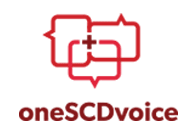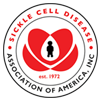Trusted Resources: Evidence & Education
Scientific literature and patient education texts
Hydroxyurea to Lower Transcranial Doppler Velocities and Prevent Primary Stroke: The Uganda NOHARM Sickle Cell Anemia Cohort
source: Haematologica
year: 2020
authors: Robert O. Opoka, Heather A. Hume, Teresa S. Latham, Adam Lane, Olatundun Williams, Jennifer Tymon, Maria Nakafeero, Phillip Kasirye, Christopher M. Ndugwa, Chandy C. John, Russell E. Ware
summary/abstract:In sub-Saharan Africa, sickle cell anemia (SCA) remains a significant public health problem with high mortality: an estimated 50-90% of affected children die before 5 years of age. A high prevalence of stroke is particularly devastating for children and has substantial morbidity. Hydroxyurea is now recommended across the lifespan as a safe and effective disease-modifying therapy for SCA, but is not routinely available in sub-Saharan Africa.
NOHARM (NCT01976416), a randomized double-blinded, placebo-controlled trial, was among the first prospective studies to investigate hydroxyurea treatment for children with SCA living in a malaria endemic region within Africa. The NOHARM trial consisted of a blinded phase (Year 1) and an open-label phase (Year 2). Initially children 1.00-4.99 years of age were randomized either to placebo or fixed-dose hydroxyurea (20 mg/kg/day). The Year 1 results demonstrated that short-term hydroxyurea treatment was both safe and efficacious in this young patient population living in a malarial endemic region. We now analyze Year 2 data from the open-label phase, in which all NOHARM participants received hydroxyurea at 20 mg/kg/day, to compare the effects of hydroxyurea on SCA-related morbidity and also to provide serial transcranial Doppler (TCD) data, which were not included in the original randomized report.
organization: Makerere University, Uganda; Université de Montréal, Canada; Cincinnati Children's Hospital Medical Center, USA; University of Cincinnati College of Medicine, USA; Ann and Robert H. Lurie Children's Hospital of Chicago, USA; St. Luke's University Health Network, USA; Global Health Uganda, Uganda; University of Indiana, USADOI: 10.3324/haematol.2019.231407
read more
Related Content
-
Hydroxyurea (hydroxycarbamide) for sickle cell diseaseBACKGROUND: Sickle cell disease (SCD) i...
-
Association of Matched Sibling Donor Hematopoietic Stem Cell Transplantation With Transcranial Doppler Velocities in...Importance: In children with sickle cel...
-
Discovery could help treatments for sickle cell diseaseResearch team establishes biomarkers for...
-
A Conversation on Hydroxyurea: Insights and Information for the Sickle Cell Communityhttps://www.youtube.com/watch?v=Y6fmJn-5...
-
Developing Hydroxyurea, the First FDA-Approved Therapy for Sickle Cell Diseasehttps://www.youtube.com/watch?v=0kIz5ZKy...
-
Is Your Child the Right Candidate for Hydroxyureahttps://www.youtube.com/watch?v=vMvC5rVH...
-
How to Talk to Your Child About Hydroxyureahttps://www.youtube.com/watch?v=_apTt2j0...
To improve your experience on this site, we use cookies. This includes cookies essential for the basic functioning of our website, cookies for analytics purposes, and cookies enabling us to personalize site content. By clicking on 'Accept' or any content on this site, you agree that cookies can be placed. You may adjust your browser's cookie settings to suit your preferences. More Information
The cookie settings on this website are set to "allow cookies" to give you the best browsing experience possible. If you continue to use this website without changing your cookie settings or you click "Accept" below then you are consenting to this.




 +myBinder
+myBinder
